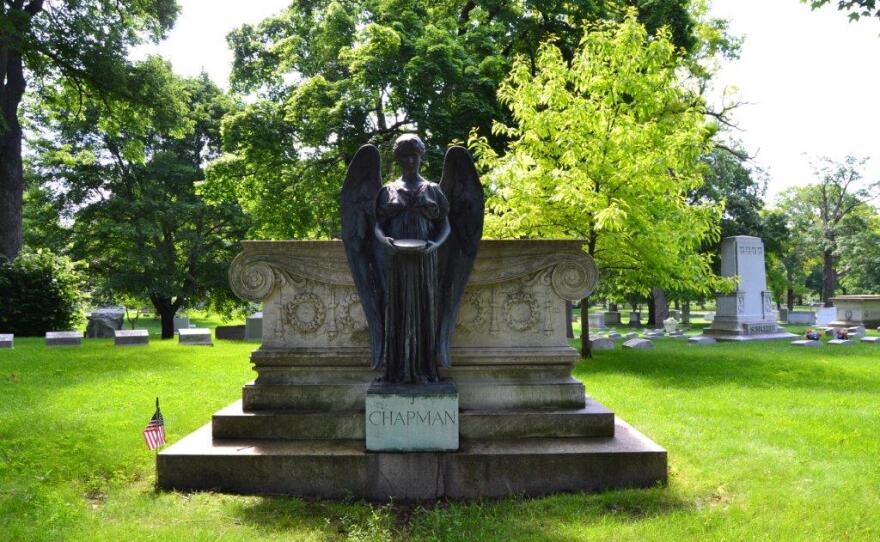Cemeteries are not just for dead bodies; they contain a wide range of art meant to symbolize both the feeling of mourning and grief but also to create a space for those who have died to be remembered for what they did in their lives.
This genre of art exploded in popularity in the United States during the Victorian Era from the 1870s to the 1910s. During this time many of the popular symbols in cemetery art were created. For example, the use of leaves like oak leaves to describe upstanding citizens or lilies for those who were pure of heart.

Paul Haubrich is a tour guide at Forest Home Cemetery and one of his tours is called Cemetery Art and Symbolism.
He explains that during this time companies that produced this art used very similar models, so things like a woman in mourning versus an angel would be very hard to tell apart. Haubrich says they then had to come up with an easier way to distinguish them without using more models.
“To be an angel, you must have wings. Even though it might look like your idea of an angel, if it doesn’t have wings, it is a woman in mourning,” he says.
Another symbol that Haubrich points out is the three step base that some monuments in cemeteries have.
“They frequently have no other indications to what their faith might be but the three steps give you a clue because it’s meant to represent God the Father, God the Son and God the Holy Ghost,” he says. “So, they’re telling you they’re Christian.”

Haubrich says that the most quintessential Victorian monument is the obelisk, of which Forest Home has many.
“They’re large, they’re tall, they have that unique feeling to them,” he says.


Unfortunately, during the Victorian Era, child mortality was a much more common occurence and it became a part of the art in cemeteries. One common practice at the time was to not include a name of a still born child’s grave because some Christians did not believe a person received a name until their baptism.
In Forest Home, there are still childrens' sections from the 1800s, which include many orphan children as the cemetery would offer free burials for any orphan who died.
After the 1910s, the genre became must less ornate and moved into the more modern and simplistic designs that are created today.
“World War I kind of ended that period of enlightenment that had begun in the 1800s, and looking forward and the war was devastating in terms of its death toll and its impact and people began to move away from the larger symbols to symbols that are most simplistic,” he says.











